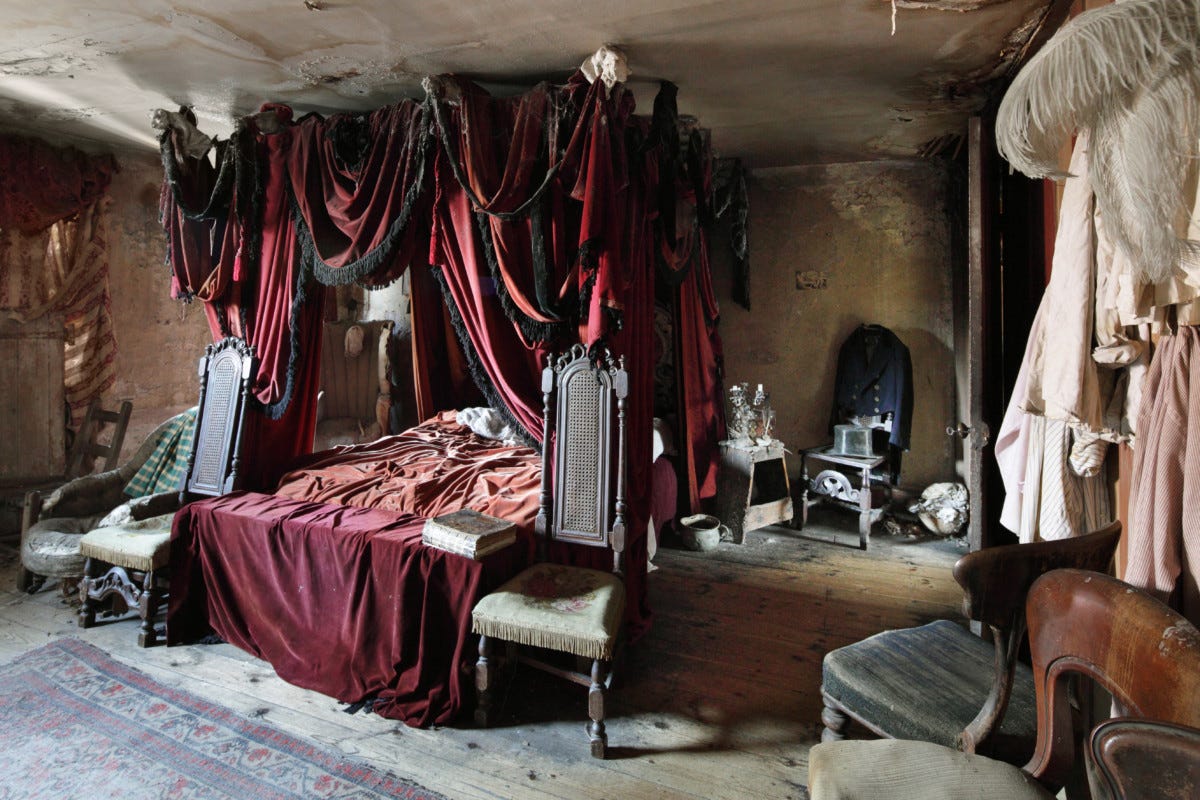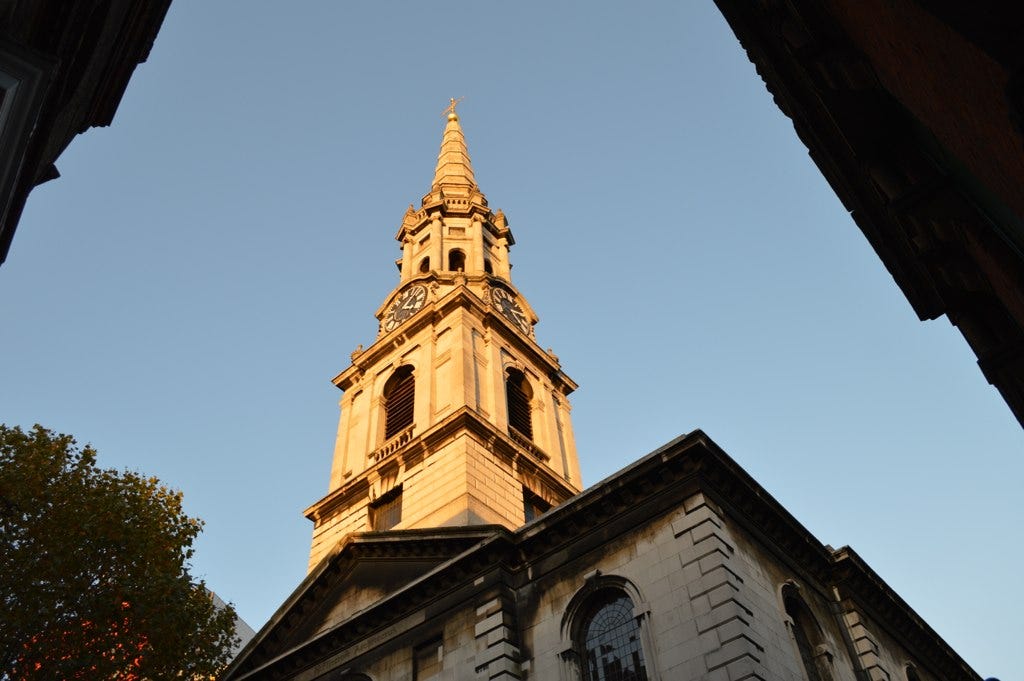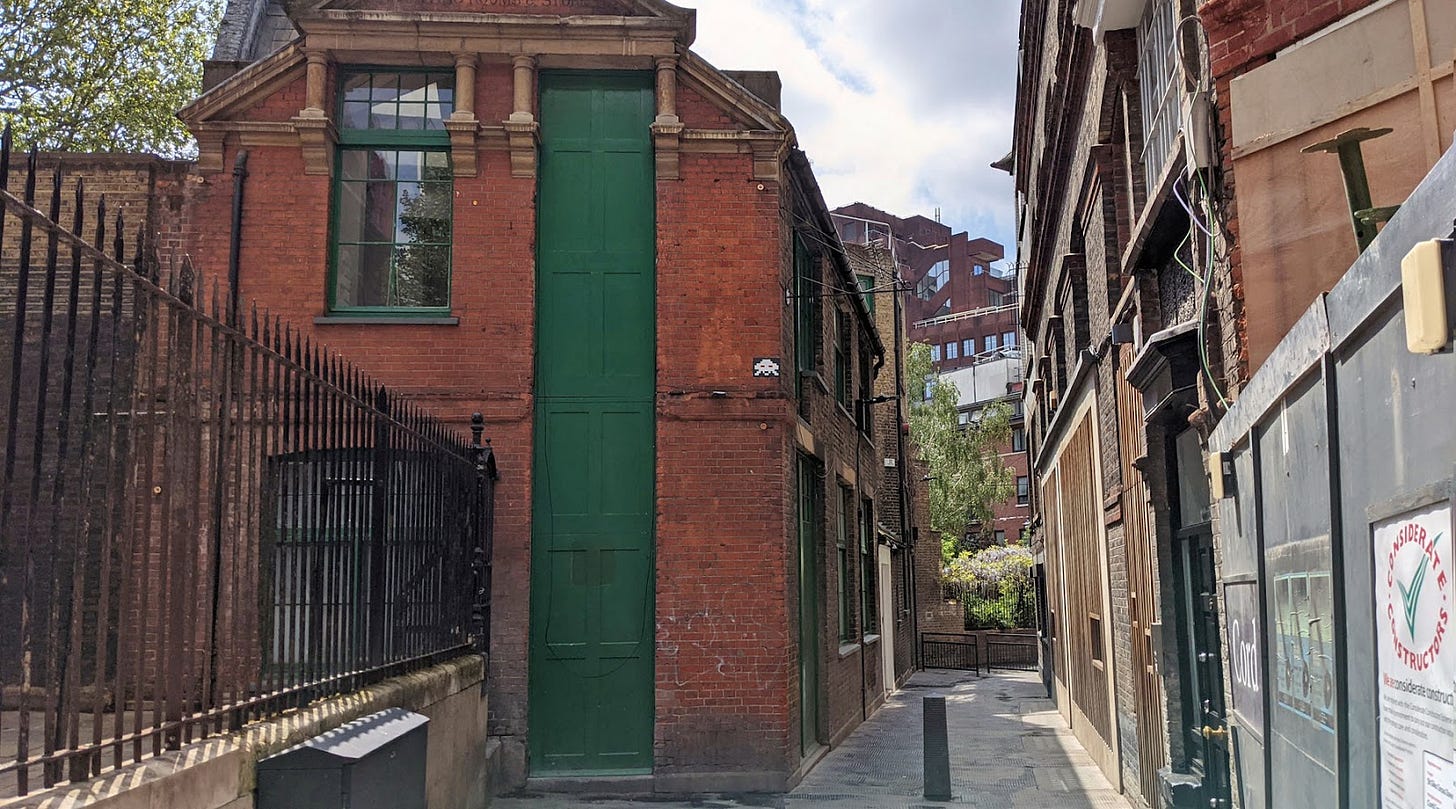Dear Readers,
Welcome to the Capital Letter, a fresh offering from The Fence magazine. We feel that London – the city we live in – needs a newsletter that picks from London’s old and new, and gives you something genuinely interesting to do.
If you’ve been following us for a while, then you’ll have some idea of what we like on our editorial team. You can expect to hear from our star writers, like Clive Martin, Bertie Brandes and Jimmy McIntosh, about pubs, clubs, music, fashion, theatre, restaurants, etc.
There won’t be much about politics, if you don’t mind. This won’t be a place for breaking news, but we are, like many others, in love with London’s peerless history, so there will be regular spotlights on the churches, curios and forgotten corners of the capital.
This will be fortnightly and free – to begin with. As we expand, it will become weekly, and also paid. But a humble newsletter it will stay: and it will be priced accordingly. You’re reading it here, on Off The Fence, but the Capital Letter will be living here permanently, so join us there today.
As ever, we’d love to hear from our readers, so if you’d like to see somewhere or something covered in this mail-out, do drop us a line at editorial@the-fence.com and we will take it from there. Tips, tricks, anything is welcome.
Today, we’ve got a gamut of tier-one tips for parents, singletons, lovers and lovelies, families and friends. But to open up, here’s the first of a new series: London nightlife is in terminal decline, but that shouldn’t stop you from going big when the feeling takes you. So here is ‘On the Razz’ – two pubs and something to eat, for when you want to make an evening of it. We begin this week in west London.
On the Razz in… Westbourne Park
The Bloody Mary at The Westbourne is good. A little too good. As such, you can have two, easily. Or three. Either way, where and how we start depends on how we’re feeling. Was it a big one? Well, three Bloody Marys will cure what ails you. Is it going to be a big one? Well, the lager is good too, in that anaesthetic way. The Westbourne looks like it should be trendier than it is. It is, after all, a pub with food. Yet for all the ubiquity of that as a concept, it keeps a certain sense of eighties chic, as if the whole idea of it is new. Some eat, others just drink copiously. The food is good: The chefs refuse to cook certain dishes for certain clients, which is always a good sign. The pub attracts some wankers, it’s true. But we’re eating elsewhere, later. Three Bloody Marys or three pints of Guinness? The choice is yours.
It's eight minutes walk exactly to get from The Westbourne to Angie’s Free House. But it might as well be light years. The walk along what has reasonable claim to be London’s least scenic chunk – the lines out of Paddington, the Westbourne Park bus garage, the rattiest bit of the Regent’s Canal – and it isn’t worth dragging out. Though if we’re breaking the two-hit pub rule you could stop for a pair of halves at The Quiet Night Inn and The Union respectively. Either way, definitely stop to buy some cigarettes at the mysterious proliferation of shops just over the bridge and then take a sharp right down to Angie’s Free House.
Have a lager. Or a Guinness, if you’re that way inclined. Immediately go outside for a cigarette, regardless of the weather. The funniest clientele at Angie’s congregate around the faux timbers that line its narrow doorway. These are mostly men in short-sleeved white shirts and flat caps who have been smoking the same tab since the dawn of time. Go back in and face the panopticon of TV screens that surround you. Have another lager. Have two. You will already know what Angie’s smells and sounds like. Don’t play the fruity; arcane law dictates who can put money in and when. As you leave, the same men will be there; with their shirts flapping ominously in the wind.
It's the shortest of staggers down Woodfield Place and to the left to Mosob. Don’t pretend you know about Eritrean cuisine. Just order the sharing platter they keep on the menu specifically for these sorts of occasions. The minced lamb is spicier than you expect, the lentils creamier. It’s perfection: spicy, salty, rich. As such it needs some washing down. The lager’s good here. Have one. Or three.
Shutters, Stop.
What is going on at the National Portrait Gallery? Zoë Law was given an exhibition despite having what could be described as a patchy professional career, and at best. Her husband, Andrew Law, is a major Conservative donor, and the Chairman of the Board, David Ross, has been described as a ‘Tory superdonor’.
The Taylor Wessing Photo Portrait Prize seems curated specifically to irk David Ross. The selection offered bursts with political fire. The winner, who takes a prize of £15,000, is Steph Wilson. We can’t imagine her portrait of Sonam hanging at Ross’ countryside mansion, Nevill Holt.
In second place is Adam Ferguson’s Big Sky, which depicts, among other things, the impacts of globalisation on the Torres Strait Islander community in Australia’s Outback. These are works of serene compositional skill. The exhibition, priced at only £8.50, closes on Sunday. Don’t miss it.
Kinema in the Woods
Much has been written about the future of the Prince Charles Cinema, which faces closure at the hands of its rapacious landlord, Asif Aziz. Sadly, the property developer is not one for backing down, and despite the international headlines, petitions and Paul Thomas Anderson bona fides, we do not anticipate a happy ending to this story.
London still has realms of independent picturehouses, and perhaps the finest new one is The Garden Cinema in Covent Garden, which opened two years ago, and it operates with a degree of genuine stylishness and affordability that is all too rarely executed these days. Why is it not better known? Who knows. But it is being gatekept no more.
A membership is only £25 for the year, and there is a fantastic bar, where a properly strong negroni retails for £8 only, and a bottle of house red is only £19.
The programming, it goes without saying, is superb. This Saturday, as part of the ‘Visions in Ruins: British Cinema 1970-1980’ offering, there’s a screening of O Lucky Man!, one of the most singular films ever made in this country. Lastly, and crucially, the website is beautifully simple to use.
The same can’t be said for the clunking operation from the tech team at the BFI, but still, there are few more elysian feelings than emerging out onto the Southbank, and seeing the lights hung twinkling above the dark drifting sludge of the River Thames. Tonight – this very evening – and on 28 February, there are screenings of Chantal Akerman’s exuberant yet sly musical, Golden Eighties. Lovely stuff.
Festoons & Fireplaces
It’s half-term from tomorrow and your children will grow ungovernable by the end of the week. Where to take them for a bracing day out? The brontosaurus at the Natural History Museum is, in our opinion, rather passé, and you can’t do anything outside, as we’re stuck in February’s armpit. So it doesn’t really stand to reason that you should take your hooligan brood to Dennis Severs’ House, the Spitalfields theatre set-slash-museum in which conversation is discouraged and silence reigns. In fact, it sounds like some sort of practical joke on our parts.
But in our experience, smallish children and teenagers love the creaking floorboards, unmade beds and half-finished lunches on the plate. They find it fantastical yet authentic (though the museum is, of course, totally inauthentic, and you can finish the tour by discoursing upon the nature of mimesis to your children, but we leave that up to you).
It’s the strongest recommendation from us. Tickets from £16 here.
A Night at Nanahoshi
Nanahoshi, formerly Jugemu until the turn of this year, is a tiny izakaya with an outsized and divided reputation.
For some, for tastemakers, it’s a little slice of Shinjuku grafted into Soho, with access and a reverence for quality produce like no other restaurant in the city. The FT’s Tim Hayward loves it, so does Marina O’Loughlin, and in the restaurant’s most protean form (opening under a different name, Kirazu, between 2013 and 2016), Fay Maschler raved about the talents of truculent chef-proprietor, Yuya Kikuchi. To others, innocent punters who walked past a half-empty Japanese restaurant on a rainy weeknight and decided to take a chance, the former Jugemu ranks among the worst meals of their lives; a Götterdämmerung of bad service, tiny tables and strange food, all tied up with a thumper of a bill at the end of the meal. You needn’t travel far to find the naysayers – just look up the Google reviews to find furious missives from mere days ago – but we’re just as proximate to the place itself, so let’s get to the bottom of it: Nanahoshi or Yeahyeahoshi?
For us, the latter – but before you pass through its rattan curtains on Winnett Street, you need to approach the restaurant with the right mindset. First, confidence: walk in and sit. No prevaricating or shilly-shallying, no craning your neck to try and read the ever-changing and mostly illegible chalkboard menu. Secondly, count the cost now. You can eat cheap but you won’t eat much, as the delicate dishes on offer really push toward Lilliputian quantities. The £120 omakase gets you the works, but £60 a head should leave you sated and libated. Keep your phone away. Don’t harass the staff. Don’t ask for soy sauce. The rest is just as easy as kicking back and letting the food come, all of it is just gorgeous.
Long-time TF readers may have seen us giving the occasional shellacking to another of London’s most contentious restaurants, The Yellow Bittern. But whereas that establishment dresses up its most inhospitable features as a form of cod-dandy immersive theatre, Nanahoshi has the bollocks to back up its bluster with spectacular food. It’s not for everyone. It’s mostly for homesick Japanese people, really. But it’s for us, and it could very well be for you.
Between Time and Eternity
Church-crawling is officially cool again. Like musical theatre, but unlike housing in zones 1-4, it’s not just for old people and gays anymore! Over the length and breadth of the capital are medieval survivors, brutalist badboys, Georgian gems and high Victorian camp. And that’s just the clergy. Our guide will be an occasional series to help the new church crawler navigate some of the capital’s very best.
First in our list is one very close to The Fence’s home: the church of St Giles in the Fields.
Historically, it was in the semi-rural no man's land between the two major settlements of London, the City and Westminster. Hence its epithet, ‘in the fields’. Now, of course, the fields have given way to Richard Rogers-designed steel and glass, but the church remains. Its weird location has meant it has played many roles, from leper chapel to last stop off for those being driven to the noose at Tyburn.
Start with the churchyard itself. Quite unusually for central London, there are still grave stones here among the scrubby collection of fag ends and sandwich wrappers. Appearances are deceptive, however. St Giles’s churchyard still has thousands of stiffs beneath its tufts of grass, some of them very prominent indeed.
Among those who were executed and their remains deposited here were Saint Oliver Plunkett, the Catholic Archbishop of Armagh and the Lollard, Sir John Oldcastle, who was the inspiration for the character of Falstaff. Regardless of station, each person who was killed here was offered a final drink of alcohol at the church before their execution. The libation became known as ‘the St Giles Bowl’. Despite such illustrious burials, St Giles was notorious for being a dumping ground for the poor and unfortunate. The poor condition of the churchyard was such that it was thought that the Great Plague of 1665-66 began here.
Most of the graves, including those of 11 Catholic martyrs, are lost. However, if you go to the corner by the south-east corner of the yard you will find one of the most intact tombs. It belongs to Richard Penderel, who was one of those people who sort of blunders into history and stays there. Penderel was the man who gave the young Charles II a place to hide in an oak tree of his acquaintance, thus gifting us every pub with the name ‘The Royal Oak’.
Go round the church from Penderel’s tomb until you come back to the door. The current church is the third or fourth on the site. The first was a medieval leper chapel consecrated in 1101. Today’s church dates from 1733. Turn left into the main body of the church. You will see a pretty much unspoiled Georgian interior, with the Ten Commandments and paintings of Moses and Aaron by the high altar. The pulpit is delightfully camp, though the more interesting pulpit is stashed in a side aisle, a plain and whitewashed thing; it was from this that Wesley preached some of the first Methodist sermons. The memorials are varied – from labour leaders to colonial administrators. By far the most interesting is that of Alice, Duchess of Dudley. Alice was treated so badly by her odious husband, Sir Robert, that she was, most unusually, created a Duchess in her own right by a sympathetic Charles I. Her memorial, from 1669, depicts here wrapped in a burial shroud and is a masterpiece of English 17th century funerary sculpture.
The church today is very busy indeed. It has a thriving congregation and a major outreach programme. Its crypt has been transformed into ‘Showerbox’ where London’s homeless community can wash for free. As you depart either turn left down Flitcroft Street and go and see London’s tallest door. This bright green portal was constructed so that theatre sets from the West End could be stored in one of the church’s outbuildings. Alternatively turn right out of the gates to The Angel pub, which has an unspoilt Victorian interior and a long-standing relationship with the church. The current rector, the Rev. Tom Sander, can often be found pulling a pint behind the bar.
Peter Ackroyd’s book on London is a mixed bag, portentous and bloated for the most part (truly, can any original work with an abridged version be any good?) Yet Ackroyd memorably describes St Giles as ‘at the crossroads between time and eternity’. There are few better places to feel the pulsing heartbeat of the past in the capital.
*
We are finished for the fortnight and will rejoin on the penultimate day of February. What will we commend to you then? All will be revealed – but take a look at our Capital Letter map for a sneak preview. Please do share the word in the interim, and you can email us at editorial@the-fence.com at any time. Have a wonderful time – and do let us know how you get on.
All the best,
TF











